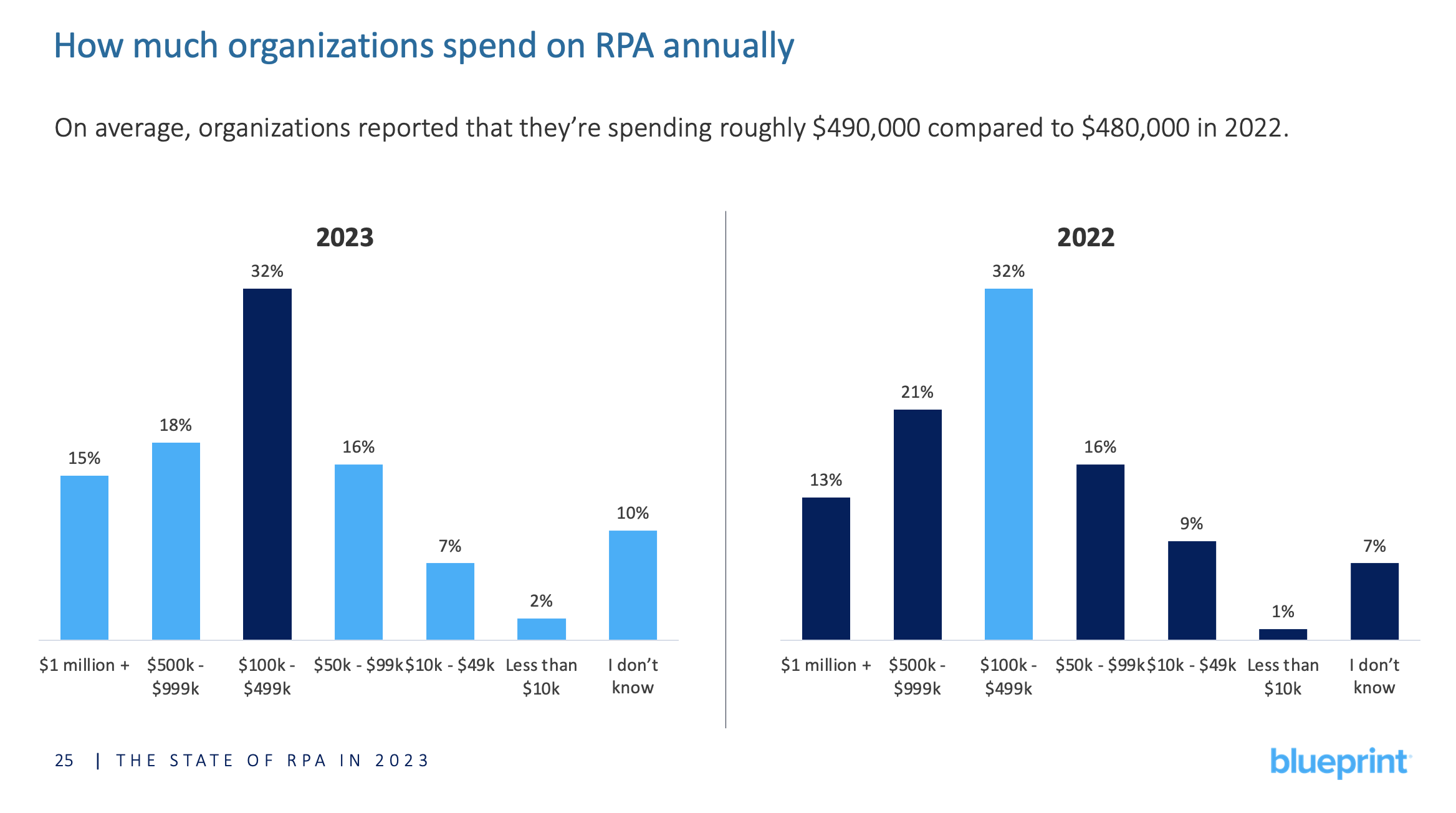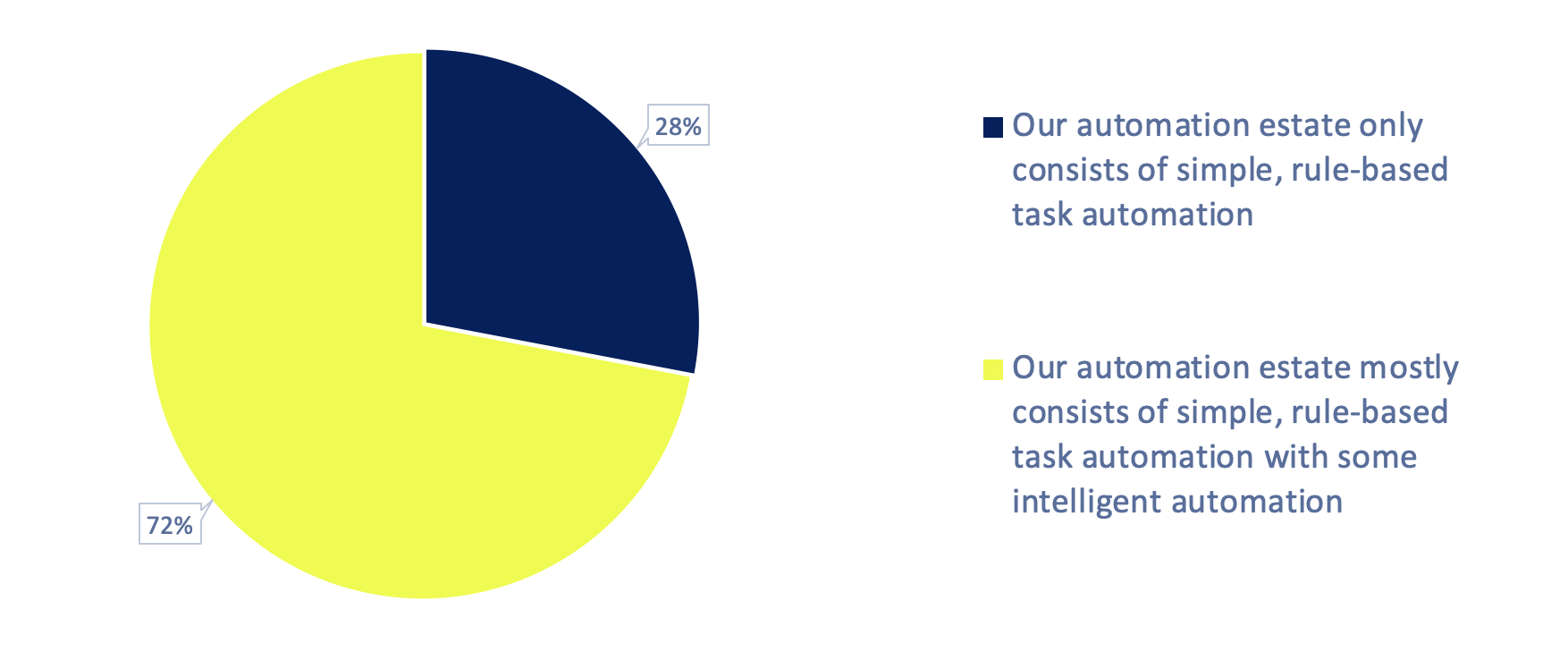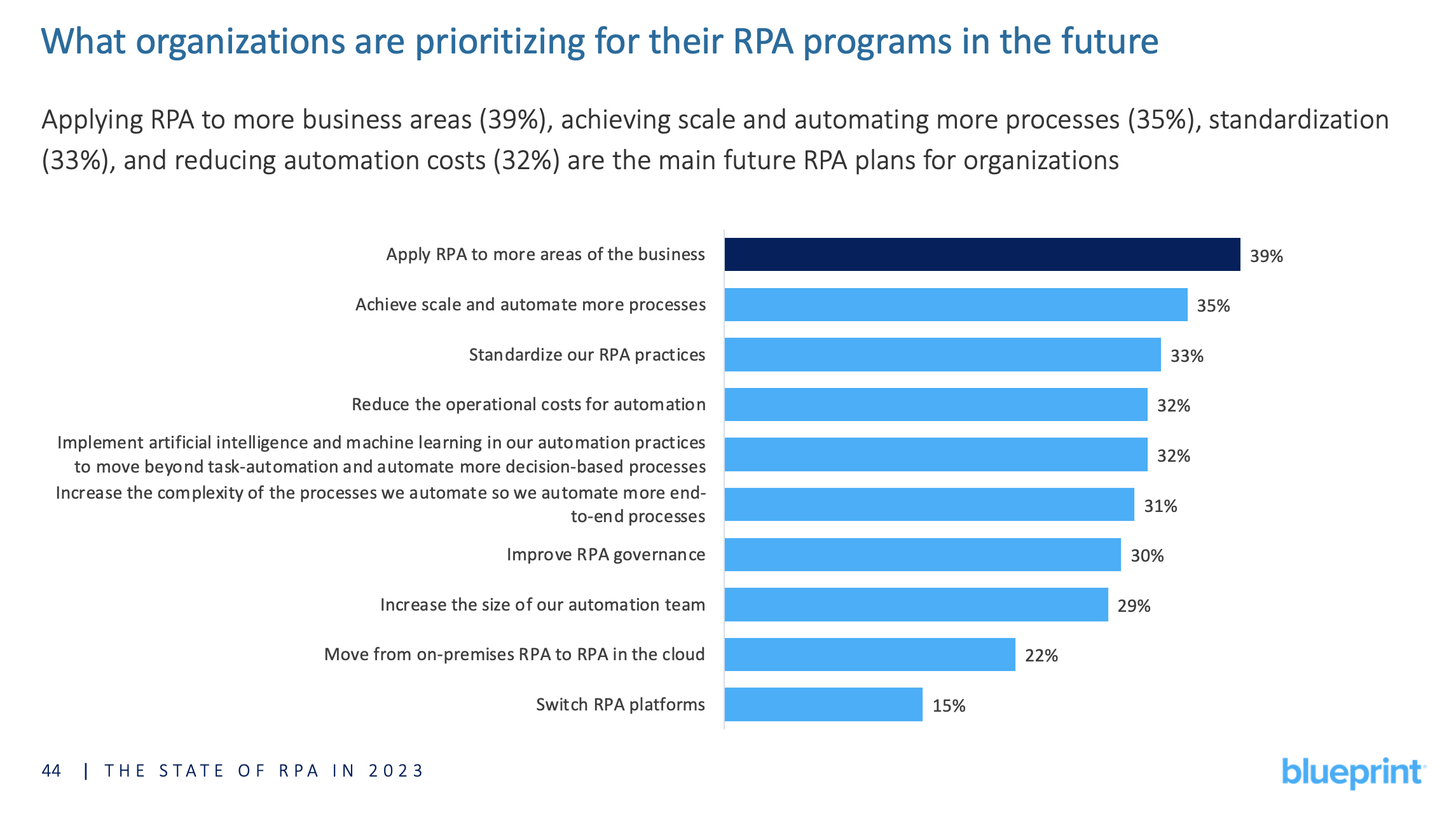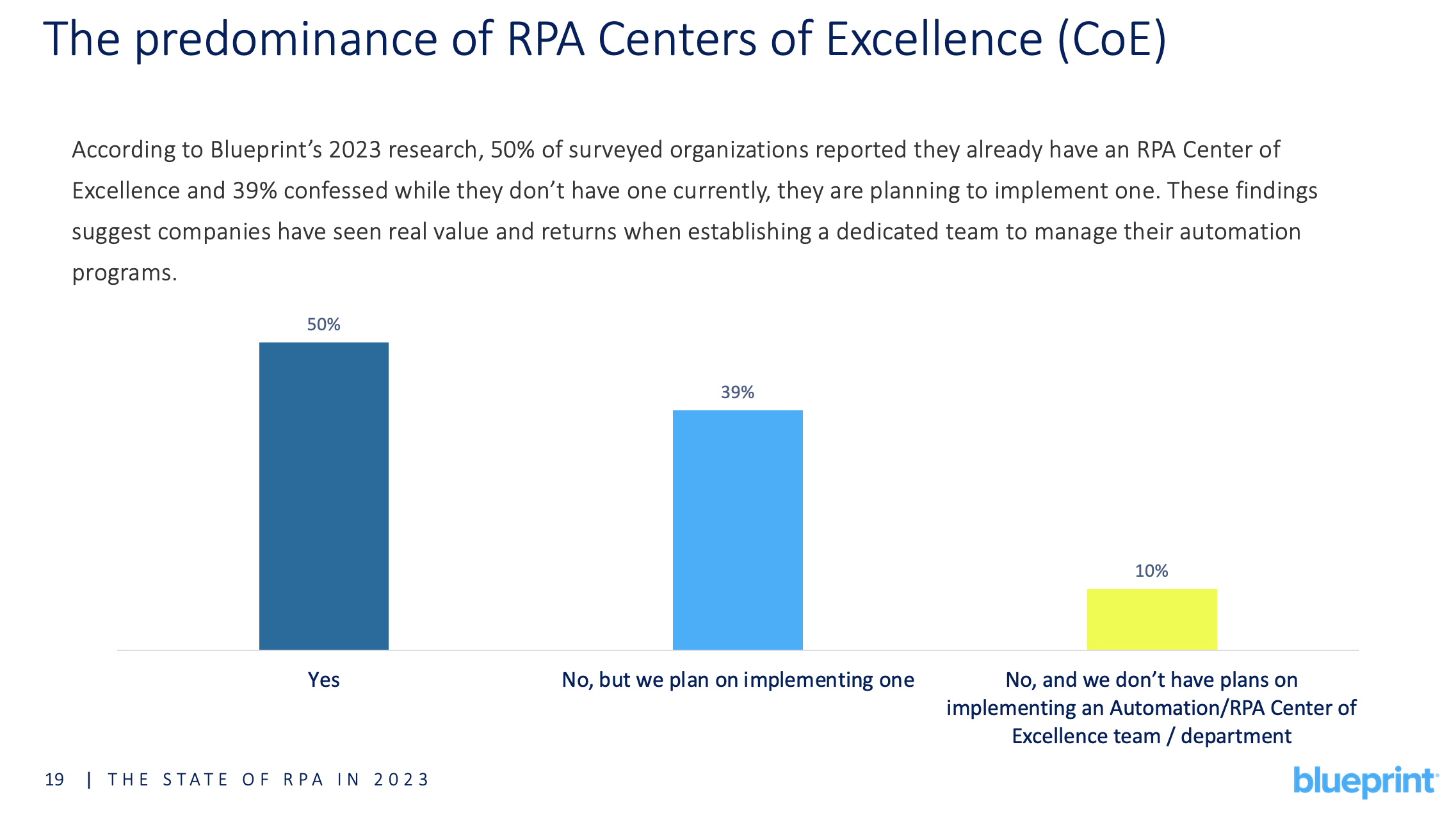7 Automation Predictions for 2024
The last 12 months have been a whirlwind in the world of automation and RPA (robotic process automation). Around this time every year, we provide a summary of the biggest RPA industry trends and events that occurred in automation in the last year and predict what we think is in store for automation in the future.
These are our seven automation predictions for what we think is to come over the next year in regards to automation and RPA.
#1 – There Will be More RPA Migrations
2022 saw a wealth of RPA migrations as showcased in our Automation Year in Review 2023 article. We expect this trend to only get bigger and gain more momentum.
As legacy RPA vendors continue to raise their licensing fees and costs, expect to see more RPA migrations in 2023. There are four major reasons driving all these RPA migrations:
- The desire to reduce automation’s total cost of ownership (TCO) and operating expenses (OPEX)
- The objective to expand automation beyond RPA with the application of lo-code/no-code digital strategies
- Simplifying automation design and delivery to enable the citizen developer or average business user to contribute to automation at scale
- Enabling better compatibility with enterprise architecture and leveraging existing investments in product suites.
The driving factors motivating RPA migrations are all guiding automation practices to one place: Microsoft Power Automate, leading to our next prediction.
#2 – Microsoft Power Automate’s Market Share Will Grow Substantially
Microsoft Power Automate continued its ascent to the top in 2023. In 2024, expect that curve to get steeper.
Power Automate is the most cost-effective automation platform on the market which was made even more appealing when Microsoft introduced Power Automate Premier Licensing. Significant resources are also saved by taking advantage of the automation infrastructure savings Power Automate delivers, in addition to the ability to leverage existing investments already made with Microsoft’s suite of products.
Microsoft Power Automate has made dramatic strides to enable citizen development as well. The familiarity of Microsoft’s user interface (UI) and additions like Microsoft Copilot make automation design and delivery that much simpler and accessible to the average business user.
Microsoft’s platform also offers seamless compatibility with the rest of the Microsoft ecosystem of products and easy compatibility with other applications through a multitude of built-in connectors.
In terms of product readiness, new features like Power Automate Process Mining, which helps define business processes and identify viable automation candidates with the help of AI, have really propelled the platform forward. The rest of the Power Platform also enables automation to go beyond RPA by leveraging products like Power Apps to build applications—a trend we also expect to be a mainstay in 2024.
#3 – Low-code/No-code Will Take Automation Beyond RPA in 2024
Moving beyond Power Automate and embracing the entire Microsoft Power Platform is a shining example of how businesses can take automation beyond RPA.
Automation practices are adopting or switching to Microsoft Power Automate in droves to enable a modern digital strategy where RPA is just one of many solutions that employ automation.
In some cases, automating a process is not the ideal solution. Creating a low-code/no-code chatbot or building an application using a drag-and-drop canvas might be a better fit.
With low-code/no-code platforms, this digital strategy relies on ease of use and democratizing development to achieve agile delivery and scale. Citizen developers can contribute to digital transformation making lo-code/no-code development a trend that will only get bigger in 2024.
#4 – Assessing Automation Estates and Removing Waste Will Continue to be a Focus in 2024
Blueprint’s research on the State of RPA in 2023 revealed that RPA estates have gotten smaller.
The reason is not that investment in RPA and automation practices is decreasing. RPA estates have gotten smaller because there has been greater attention on reducing automation costs by removing wasteful, inefficient, and redundant automated processes.
There was a mad scramble to automate everything and anything when organizations adopted RPA to achieve scale and boost ROI. Now, there is a renewed focus on optimizing RPA estates by assessing them and identifying what’s working and clearing out what isn’t.
For example, one Blueprint client that we helped migrate to Microsoft Power Automate and completed an RPA Estate Scan for as part of the process, was able to decommission 31 out of their 100-bot estate to reduce their automation costs significantly.
Other automation practices are doing the same and more will join the fray in 2024.
#5 – Intelligent Automation will Continue Its Steady March to Wide-Spread Application in 2024
2023 brought artificial intelligence (AI) to the forefront. Generative AI technologies like ChatGPT dominated headlines and received universal media coverage.
The application of AI in automation is nothing new. Intelligent automation which combines RPA and artificial intelligence components like machine learning, natural language processing, and computer vision to automate more complex, end-to-end, decision-based processes, has been around and explored with real-world application for some time.
As Blueprint’s 2023 research demonstrated, automation practices have already started to implement elements of intelligent automation in their RPA estates.
It’s also a major objective for RPA practices moving forward, as 31% percent of research respondents identified it as a prioritization for the future.
With the meteoric rise of AI in 2023, we expect to see the implementation and accelerated experimentation of intelligent automation to grow significantly in 2024.
#6 – RPA Governance and Standardization Will Be Further Prioritized in 2024
Improving RPA governance has been a priority for most automation practices for some time now, however it seems many organizations still have some ways to go.
According to Blueprint’s State of RPA in 2023 Research Report, only 50% of organizations have implemented RPA Centers of Excellence (CoE) to govern, manage, and standardize their automation programs.
That means 50% have yet to create a CoE, however nearly 40% reported that they plan on doing so, meaning that RPA governance through centralized or federated RPA Centers of Excellence will gain steam and be a major focus in 2024.
#7 – RPA Will Continue to Grow
It’s a foregone conclusion, but it deserves to be said: investment in RPA will only get bigger in 2024.
Organizations with mature automation programs will certainly focus on migrations to more cost-effective, feature-rich, and compatible platforms like Microsoft Power Automate, optimizing their existing estates, and reinforcing governance to drive effective scale.
However, there are a host of organizations that are just starting their automation journeys or in the early stages of adoption. The market is not quite saturated and 2024 will still see significant growth in RPA adoption and investment.
Conclusion
Even with sound predictions, automation evolves at a blistering pace. We do our best to predict what the next year in RPA has in store, but there are always exciting surprises. Come see how accurate we were in 12 months’ time when we provide our recap for automation predictions in 2024, or even better, sign up to receive our newsletter so you’re always informed and up to date of what’s happening in automation and beyond.
Share this
Recent Stories

The 5 Differences Between Legacy RPA Tools and Next-Generation Intelligent Automation Platforms

Microsoft Unveils Power Automate Premium Licenses. What Does That Mean for You?








